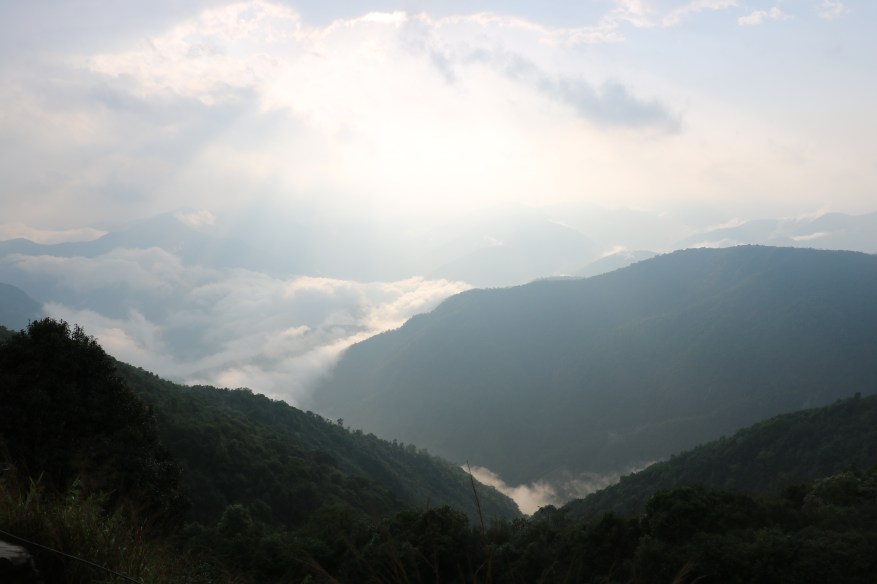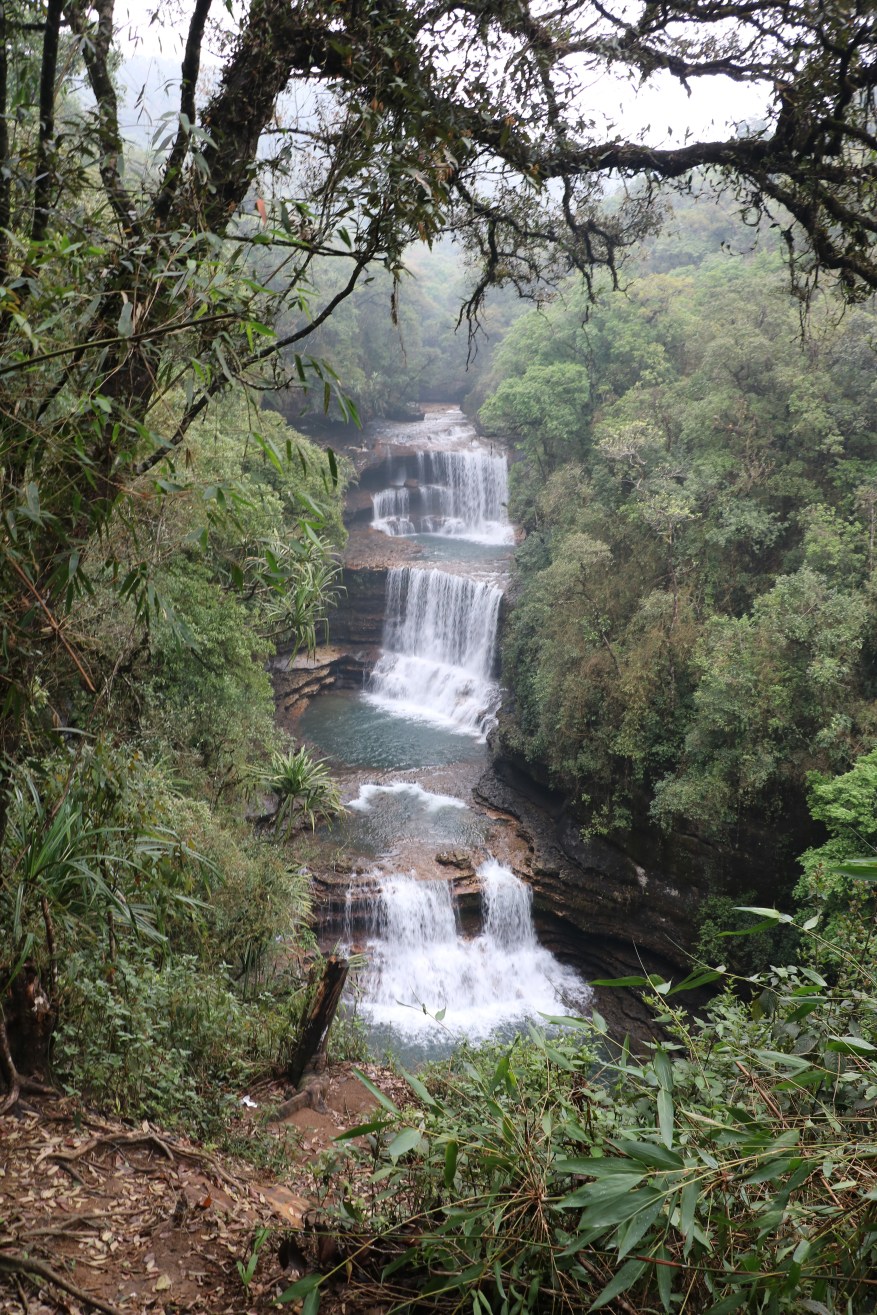This is a guest post by Tony Senanyake.
When I was in high school, all students were required to participate in a dispute resolution seminar called ‘Water and Rock’. As a group of hormonal, teenage boys we were encouraged to ‘be like water, not a rock’ a motto that caused more giggling than deep philosophical insight. ‘Just walk by’ our teacher said, ‘be like water; flow and compromise and you will win in the long-run’.
Now having had the privilege to visit Meghalaya, I think I am beginning to grasp what our teachers was trying to tell us. Water beats rock. When faced with a difficult scenario, if we act like water – transforming and shifting and swerving – we get to our intended destination. On top of that we have the power to move rock, erode rock and use the rock to carve a deep meaningful, environment of our own creation.
This might seem like a lot from a one-week trip, but I will say, when you are stuck in a little Suzuki Maruti car for hours, during a monumental deluge, teetering on the side of a hill, stranded on a road that is bookended by two landslides and suffering with food poisoning … weird things can go through your mind.
Let me tell you a bit more about the amazing part of the world that is Meghalaya.

- The Rains
While in Meghalaya we witnessed the full force of monsoonal rains. The rain, thunder and lightning joined us one morning for breakfast. We watched as vehicles were caught in surging tides, and there were moments where our hearts were really in our mouths.
We were travelling to the town of Sohra (Cherrapunji) in Meghalaya, which is known as the ‘Wettest Place in the World’. It apparently holds the record for the most rain in a month and in a year (albeit in 1861) and from what we saw that day, I believe it.

The heavy monsoonal rains have created a truly remarkable landscape. The State sits on the top of a plateau that feeds the rivers that coalesce in the deltas of Bangladesh. Consequently, there are precipitous waterfalls, and deep canyons that snake through the landscape. Driving around, you are faced with terrifying drops and often we drove above the cloud line meaning that we could not even see the bottom of the canyons. Meghalaya is described as the ‘Scotland of the East’ but having visited Scotland, I think this is some serious under-marketing of the beauty of this land.


- Bridges and Caves and Waterfalls
The rains, and their consequential effects on the landscape, have created the spectacular sights that travelers flock to. The most unique of these sites are the living root bridges.
Local rubber fig trees have found a way to tentacle their roots and limbs to traverse the rivers that crisscross the valleys. These roots have been manicured and cared for by local tribes, like monstrous bonsai trees, to create these remarkable bridges that feel as sturdy as any steel suspension bridge.
In one location, an adventurer can cross a double tree bridge that finds its source from a single tree. The trip to glimpse this natural marvel is a strenuous one, with a 3,500-step hike down followed by the same, calf-destroying trip back up with just the memory of the vista for motivation. Our guide (Kit) told us that frequently, over-confident adventurers would have to be hauled by locals to the top of the hike, by stretcher. Thankfully, we did not succumb to this indignity.
We were also treated with waterfall views everywhere we looked. These waterfalls have carved deep canyons thanks to the limestone-rich, geology of Meghalaya. Furthermore, below the ground there are numerous caves that we had the opportunity to explore. One of the cave systems we explored aptly named the Garden of Caves, was discovered less than 20 years ago. This really highlights the constant evolution of the landscape caused by the areas rainfall.


- The Symbols of ‘Development’
The day before the rains hit, we joined a local guide who walked us through the rural countryside. As we traversed the beautiful countryside, we would come across small villages that were only connected to the outside world through a small walking track. These villages contained no more than 20 – 30 buildings but were bustling with young children and animals. It was a strange experience to visit villages that were so untethered.
In these towns, one constant site were the yellow plinths denoting the completion of an MGNREGA project. The plinths listed details of the development project – a walking path, bore-well, or local community building – the date of completion, and a detailed costing of the project down to the daily cost of labor. Even in these remote towns, there were reminders of the power of social welfare schemes and the long hand of government.


As we traversed the countryside, we were often faced with bare rock faces. We learnt that many of the magnificent hills in Meghalaya were now quarried and the rock was often sold to Bangladesh, which sits directly to the south of the State. This was yet another reminder of the environmentally impacts of development.
- A Land now Part of a Country
The local people who called this part of the world home are the Khasis, however Meghalaya also is home to members of the Garo and Jaintia tribes as well. The Khasis are a recognized, Scheduled Tribe under the Indian Constitution reflecting their indigenous relationship with the land. As our driver (Jeff) taught us, the Khasi people hold to a matrilineal culture. This means that amongst many other things, upon marriage the husband joins the wife’s family and takes on their wife’s name. This is in starc contrast to the practice in the majority of India where wives move into their husband’s house upon marriage.
Meghalaya sits in the northeast region of India and is connected to the rest of mainland India by a tiny sliver of land that is only 20 km wide. The northeast is comprised of what is known as the seven sister-states, many of which have only more recently received formalized statehood (Meghalaya in 1971). Visiting Meghalaya was a visceral reminder of how diverse India is and how remarkable it is that one, democratic country can hold so many disparate peoples.
- Steps into the Modern World
As with the rest of the world, modernity is imposing itself upon the local population. Through to the mid 19th Century the local Khasi language did not have a written form. The written form of the language was formalized by a Welsh Missionary, Thomas Jones. Consequently, Khasi history has largely been passed down from generation to generation through verbal storytelling and much of the history of the area has been lost.
As with many parts of India, the British influence is hard to miss. In Shillong, the capital of Meghalaya, giant Victorian style buildings dominate the central district and stand as homes to many government functions. Entry to many of these buildings were restricted to locals until recently because of entry restrictions to British buildings.
A baby blue cathedral stands proudly in the town center and represent a religious home to the almost 75% of locals who now believe in Christianity.
Meghalaya’s rains have forged a landscape that shape the lives of those that call this beautiful state home. The waterways, canyons, and waterfalls lead to many locals living in small communities that become disconnected during the heavy monsoonal period. This disconnection has fostered local cultures of incredible diversity and uniqueness. The ancient tribes are ingenious enough to create root bridges, mouthwatering feasts and create flourishing lives in one of the wettest places on the globe. As globalisation continues its onward march, it will be fascinating to see how the tides of change will be either forced back or embraced.
Many thanks to our friends Lilianna and Nishant for their adventurous spirit and photography skills.

